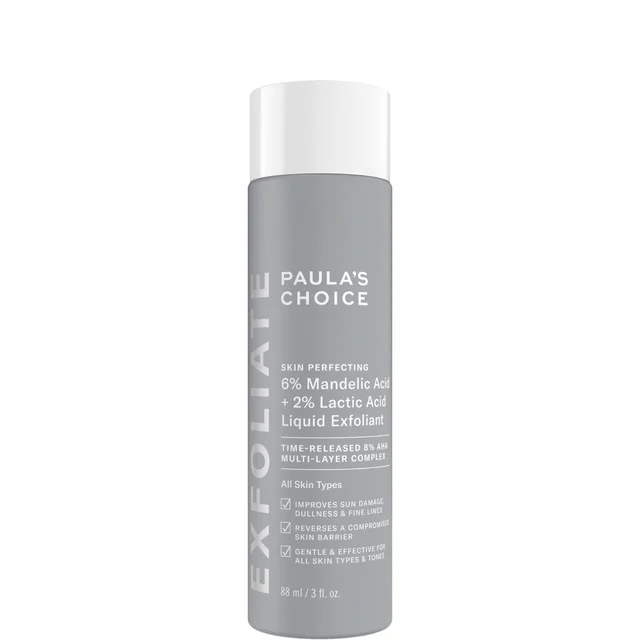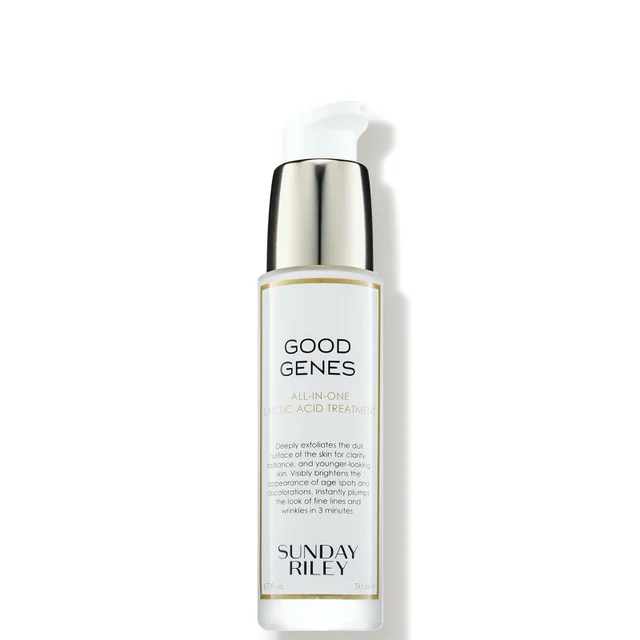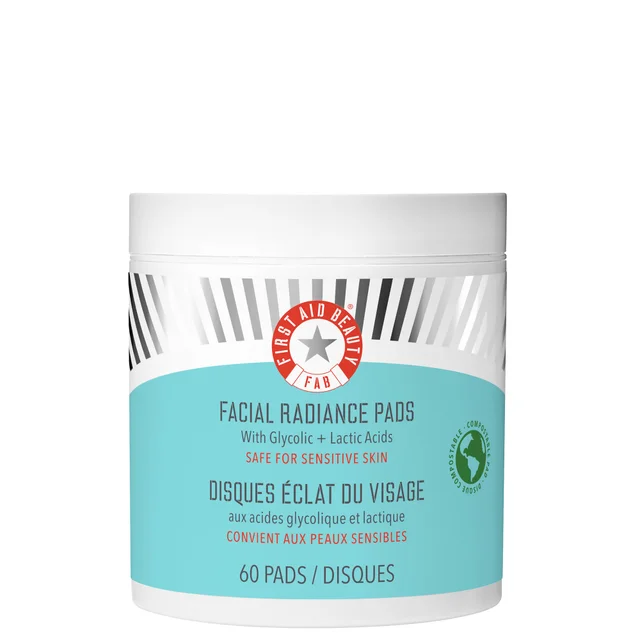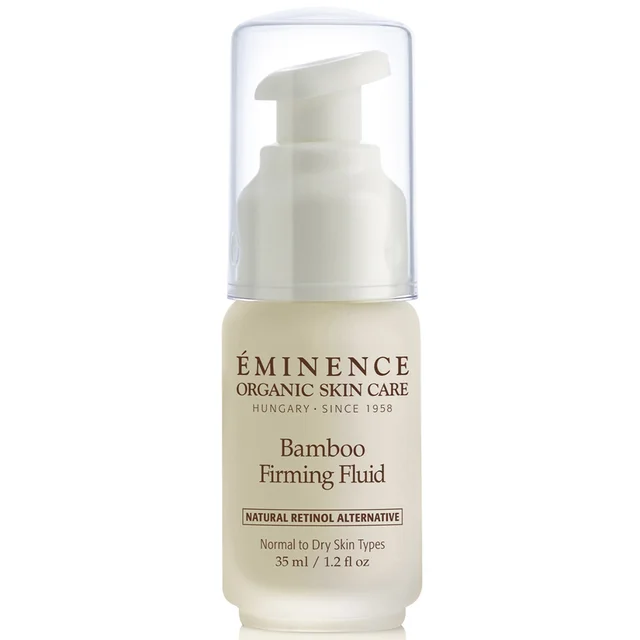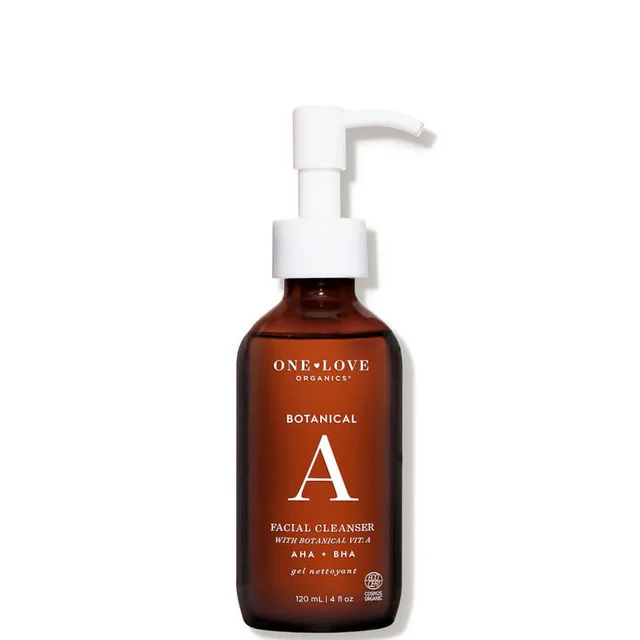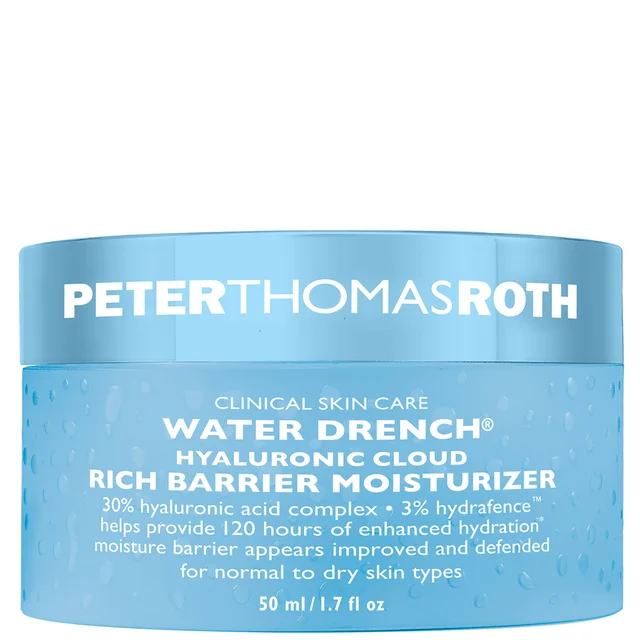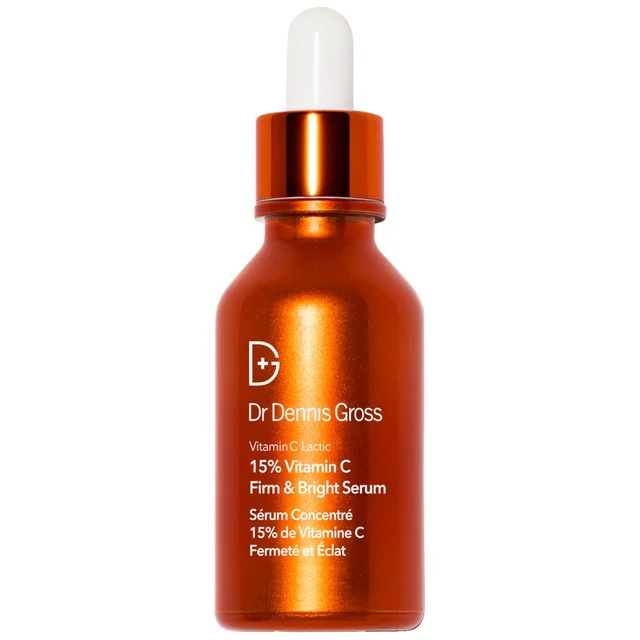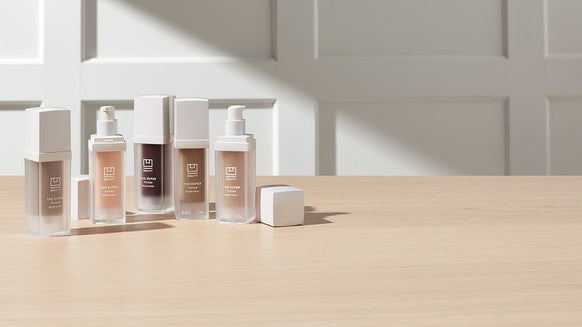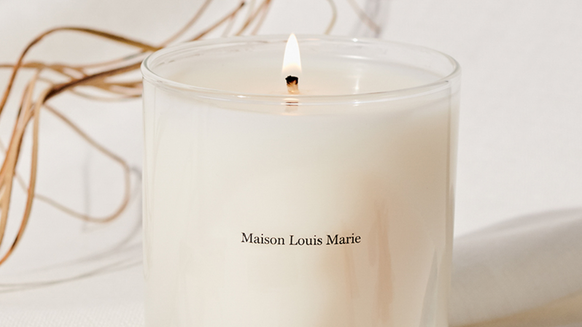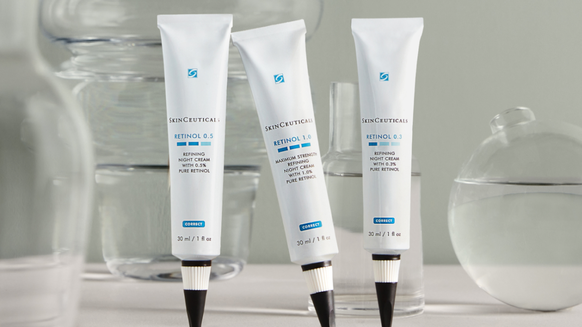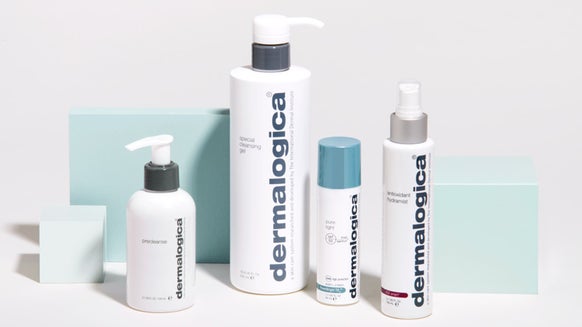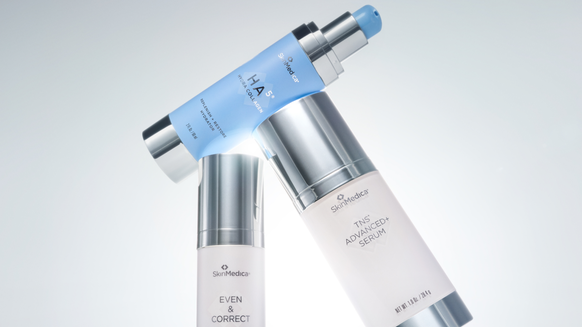Lactic Acid for Skin: A Dermatologist Explains All
If you think the idea of using acid on your skin sounds scary, it’s not. Truth be told, skincare acids are one of the best skin refreshing and rejuvenating ingredients available. Far less harsh than other types of exfoliating acids, lactic acid is one of the best proven ways to address skin damage, rough texture, and dullness, and is particularly effective in transforming the skin in next to no time. Derived from milk, lactic acid’s exfoliating benefits are far superior, which is why Cleopatra was said to bathe in it regularly. So, if you’re ready to ramp up the ante on your skincare routine, it’s probably time to add lactic acid to the mix.
Meet the Expert
Dr. Ashley Magovern - Board-certified dermatologist and member of Dermstore's Medical Advisory Board
What Is Lactic Acid?
Lactic acid is an alpha-hydroxy acid (AHA) that’s best known for its exfoliating properties as well as its ability to soften the skin and improve its overall texture. “It’s naturally derived from milk or fermented plants and is one of the gentlest exfoliating acids, which makes it especially helpful for dry or sensitive skin types,” says board-certified dermatologist Dr. Ashley Magovern, M.D. The first known uses of lactic acid date back thousands of years, when the ancient Egyptians would soak in baths containing spoiled milk to help soften their skin.
Lactic acid gently lifts away the uppermost layers of the skin to help remove discolored skin cells, thereby fading dark spots and softening fine lines and wrinkles. With fewer discolored cells on the surface, the skin appears brighter, clearer, and more uniform in tone. Lactic acid can be found in various types of over-the-counter skincare products, including cleansers, masks, serums, toners, overnight treatments, and even at-home chemical peel pads. Since lactic acid can make the skin more sensitive to the sun, it’s best to always use it with sunscreen to protect the skin from damage.
What Does Lactic Acid Do for the Skin?
The reason lactic acid is a skincare expert favorite is that it’s gentle yet effective, helping to improve the skin’s appearance, tone, and texture. According to Dr. Magovern, lactic acid gently dissolves the bonds between dead skin cells on the surface, revealing fresher, smoother skin underneath. “It also stimulates cell turnover, boosts collagen production, and improves the skin’s natural ability to hold moisture,” she adds. The result? Softer, brighter, smoother-looking skin that won’t cause irritation or redness.
Key Benefits of Lactic Acid
There are numerous benefits to regularly using lactic acid to improve the skin’s appearance and its health. Dr. Magovern says that with regular use, lactic acid helps smooth rough texture, brighten dullness, soften the look of fine lines, and fade dark spots or post-acne marks. Other key benefits of the acid include:
Exfoliation: Since lactic acid is technically a chemical exfoliant, it works to break up the ‘glue’ that holds dead skin cells together on the skin’s surface. By dissolving the bonds between skin cells and whisking them away, lactic acid helps to give the skin a smoothing effect that also keeps the pores clean. Brightening: Thanks to lactic acid’s exfoliating benefits, it’s able to give a brightening effect to the skin. Fewer dead skin cells on the surface allow light to reflect properly off the skin’s surface, giving it a healthy glow. Increases skin thickness: Using lactic acid over a longer period can help thicken the skin somewhat. Studies show that a higher concentration of lactic acid, used regularly, increases epidermal and dermal thickness, thereby improving the skin’s health. Supports collagen: Since lactic acid exfoliates the skin and accelerates skin cell turnover, it helps maintain healthy collagen levels, keeping the skin looking firm and taut. Enhances hydration levels: One of the most notable benefits of using lactic acid is that it helps maintain healthy hydration levels in the skin by normalizing the skin’s natural moisture balance. Acts as an antimicrobial. For acne-prone skin, lactic acid products may be an effective way to control breakouts, as the ingredient can help limit the growth of acne-related bacteria on the skin.
How to Use Lactic Acid in Your Skincare Routine
Of all the skincare acids, lactic acid is by far the gentlest, making it safe for use by all skin types and tones. In fact, many doctors feel comfortable with pregnant women using it.
When first incorporating lactic acid into a skincare routine, it’s best to start with a low concentration (around 5%) to ensure the skin acclimates to it properly. “Use a lactic acid product one to two nights per week and then gradually increase to every other night if your skin tolerates it well,” Dr. Magovern shares. It’s best to be cautious about pairing ingredients with lactic acid to prevent over exfoliation, which can cause the skin to become raw or irritated.
Always apply lactic acid to clean, dry skin in the evening and follow with moisturizer. Dr. Magovern says to always apply it to completely dry skin as damp skin can cause acids to penetrate more deeply and lead to irritation. Although lactic acid is naturally hydrating on its own, it’s best to pair it with a moisturizer to support the skin barrier, keeping the skin soft and comfortable. Because lactic acid can increase sun sensitivity, Dr. Magovern recommends always pairing it with sunscreen. Most people can tolerate using lactic acid daily, and within a few weeks of using it, you should start to see the first signs of results.
What Should You Pair with Lactic Acid?
Lactic acid pairs well with a handful of skincare ingredients, making it even more effective when used in combination. Some of the more well-known lactic acid pairings include:
- Ferulic acid
Retinol or bakuchiol - Salicylic acid
- Polyhydroxy acids
However, Dr. Magovern advises not to layer it with retinoids or other exfoliating acids at first.
Is Lactic Acid Safe for All Skin Types?
For the most part, lactic acid is safe for use on all skin types, including those with more sensitive skin, because it’s gentler than many other AHAs. Since it is a low-concentration acid, it isn’t nearly as irritating as others, making it less likely to cause redness and irritation. You should always patch test an area of skin, like the inner elbow, before applying lactic acid to your face if you are new to the ingredient.
Lactic Acid vs. Glycolic Acid
Lactic acid and glycolic acid are similar yet different. While both offer exfoliating benefits to remove dead skin cells, lactic acid is more commonly found in moisturizers to transform rough, dull, dry skin, while also providing a dose of hydration. “Lactic acid also has a larger molecular size than glycolic acid, so it doesn’t penetrate as deeply and is less likely to cause irritation,” says Dr. Magovern. This makes it a more effective and gentle option, making it a safe choice for more sensitive and reactive skin types. On the other hand, glycolic acid is a step up from lactic acid in terms of concentration. “It’s stronger and can be more effective for thick, oily, or resilient skin while lactic acid is ideal for dry or sensitive skin,” she explains. Glycolic acid is often a go-to for improving skin tone and texture, with the added benefit of stimulating collagen. However, those with sensitive skin may find glycolic acid to be too irritating or harsh. Ultimately, the best AHA for your skin depends on your skin type, what it can tolerate, and the level of exfoliation it can handle.
Potential Side Effects
All skincare ingredients come with the potential for unwanted side effects and adverse reactions, and although lactic acid is generally well-tolerated, it’s not exempt from side effects either. Lactic acid can potentially cause:
- Increased sun sensitivity
- Skin irritations
- Redness and burning
- Dry, peeling skin
- Itching
Remember that lactic acid is an exfoliating acid, and using it more often than your skin can tolerate, or pairing it with the wrong ingredients and treatments, can lead to over-exfoliation and damage the skin’s protective barrier. Dr. Magovern adds that some people experience mild tingling, redness, or peeling when they first start using it. “These effects usually subside as the skin builds tolerance. If irritation, redness, tightness, burning, flaking, or stinging persists (which are all signs of over exfoliation), reduce frequency, switch to a lower strength, or stop using the acid for several days to focus on hydrating and repairing the skin barrier.”
Best Lactic Acid Skin Care
1. Sunday Riley Good Genes All-in-One Lactic Acid Treatment
Hit reset on your skin with this deep exfoliation treatment, perfect for when you want an instant glow. This multi-tasking, cult classic lactic acid-based formula helps to brighten the appearance of dark spots and discoloration while plumping fine lines and wrinkles for smoother, softer, more even-looking skin.
Key Ingredients: Lactic acid, licorice root, blue agave, algae, orchid, arnica, prickly pear
Skin Type: All
Skin Benefits: Deeply exfoliates the skin, gives an instant glow, improves skin clarity and smoothness, brightens discoloration, plumps up lines and wrinkles
Beauty Insider Tip: Unlike other skincare products, this one is safe for use during pregnancy due to the presence of lactic acid in the formula, which is non-teratogenic.
2. Paula’s Choice Skin Perfecting 6% Mandelic Acid and 2% Lactic Acid Liquid Exfoliant
Press reset on your skin’s health and appearance with this powerful, yet gentle liquid exfoliator packed with a blend of mandelic and lactic acids. Perfect for those who want to smooth, soften, and brighten the skin, this viral formula also supports a healthy skin barrier and reduces the appearance of sun-damaged skin, leaving it far more radiant and even.
Key Ingredients: Mandelic and lactic acids, yarrow extract, cherry blossom, chocolate vine, bayberry
Skin Type: Normal, dry, oily, combination
Skin Benefits: Resurfaces the skin to eliminate dead skin cells, rejuvenates and renews the skin, breaks up stubborn discoloration, and smoothes the skin’s texture while softening fine lines
Beauty Insider Tip: Since the exfoliator is pH-balanced and falls within the 3.0–4.0 range, it effectively brightens discoloration without causing post-inflammatory hyperpigmentation, even on deeper skin tones.
3. First Aid Beauty Facial Radiance Pads with Glycolic and Lactic Acids
When time is of the essence and a multi-step skincare routine isn’t in the cards, reach for these sensitive skin-friendly exfoliating pads. Featuring a blend of AHAs to effectively exfoliate and brighten the skin, swipe one on as a quick pre-makeup skin prep or use them as part of your everyday skincare routine.
Key Ingredients: Glycolic and lactic acids, lemon peel, cucumber water, Indian gooseberry
Skin Type: All
Skin Benefits: Firms and tightens the skin, reduces the visible signs of aging, improves elasticity, leaves skin looking and feeling smooth and silky
Beauty Insider Tip: Always apply a thin layer of the formula to clean skin and gently massage in circular motions to ensure the skin absorbs it most effectively.
4. Eminence Organic Skin Care Bamboo Firming Fluid
So much more than the average skin brightener, this firming formula deeply hydrates while providing a skin-tightening effect thanks to a range of fruit and plant-derived actives that work hard. The vitamin-, mineral-, and antioxidant-rich formula helps to strengthen the skin and balance its pH levels, resulting in healthier, more resilient skin that glows.
Key Ingredients: Bamboo, coconut oil, coconut water, chicory root oligosaccharides, tara tree, plant stem cells, monoi
Skin Type: All
Skin Benefits: Firms and tightens the skin, reduces the visible signs of aging, improves elasticity, leaves skin looking and feeling smooth and silky
Beauty Insider Tip: Always apply a thin layer of the formula to clean skin and gently massage in circular motions to ensure the skin absorbs it most effectively.
5. One Love Organics Botanical A Facial Cleanser
This naturally derived AHA and BHA-rich cleanser is the one to reach for when clogged pores, impurities, and dead skin bog down your complexion. Featuring a blend of plant-based cleansers and nourishing moringa oil, this cushiony cleanser never strips the skin of its much-needed oil, yet improves its tone and texture, leaving behind a super-soft, supple feeling.
Key Ingredients: Aloe leaf juice, glycerin, lactic acid, wintergreen extract, salicylic acid, morninga seed oil, soapbark wood extract, orange oil, chinaberry leaf extract
Skin Type: Normal, oily, dry
Skin Benefits: Improves dullness and the appearance of fine lines, leaves skin looking clearer
Beauty Insider Tip: Use the cleanser as the second step in a double cleanse to fully remove dirt, oil, and makeup, or as a refreshing cleanser in the morning
6. Peter Thomas Roth Water Drench Hyaluronic Jelly Moisturizer
Quench dry skin with this light-as-a-feather moisturizer that transforms to a matte finish upon application. Perfect for skin types concerned with clogged pores, it refreshes the skin by drawing in moisture and leaves behind a non-greasy, shine-free finish that makes everyone an instant fan.
Key Ingredients: Lactic acid, hyaluronic acid, HydraFence, aloe vera, citrus water
Skin Type: All
Skin Benefits: Hydrates and refreshes the skin, controls oil, decreases redness and irritation, diminishes the appearance of enlarged pores, leaves skin feeling calm and balanced
Beauty Insider Tip: Thanks to the moisturizer’s jelly-like texture, it cools on contact and absorbs into the skin instantly, leaving no stickiness.
7. Dr. Dennis Gross Skincare Vitamin C Lactic 15% Vitamin C Firm and Bright Serum
Brighten up discoloration, dark spots, sunspots, and an overall uneven skin tone with this powerful lactic acid-rich serum. Ideal for skin that needs a boost in the glow department, the serum also helps to smooth out fine lines and wrinkles while strengthening the moisture barrier and increasing the absorption of antioxidants for an overall skin reset, you’ll see and feel.
Key Ingredients: L-ascorbic acid, lactic acid, licorice, alpha tocopherol
Skin Type: Normal, combination
Skin Benefits: Protects against sun-related damage and aging, brightens the skin and reduces dark spots, lifts and firms sagging skin by improving skin density
Beauty Insider Tip: It’s normal for the skin to experience a slight tingling sensation upon application, as it adjusts to the serum.
FAQs
Which is better, kojic acid or lactic acid?
Lactic and kojic acids both have their place in skin care, and deciding which one is best for you really comes down to your skin goals and skin type. Dr. Magovern says that lactic acid exfoliates the skin and boosts hydration while kojic acid targets pigment production to fade dark spots. “They can be combined for complimentary benefits.”
Can you mix lactic acid with azelaic acid?
Lactic acid works well with most skincare ingredients, and one that enhances its effectiveness is azelaic acid. This gentle acid is derived from wheat, rye, and barley, and like lactic acid, it too works by exfoliating the skin. But it also helps control the growth of acne-causing bacteria, which is why azelaic acid is often recommended for breakouts and rosacea. Using the two acids together can result in better, more even exfoliation, as azelaic acid does not penetrate as deeply as lactic acid. However, Dr. Magovern recommends using them at different times—one in the morning and one at night, or on alternating days—to minimize irritation, especially if you have sensitive skin.
Does lactic acid increase sun sensitivity for the skin?
Lactic acid can increase sun sensitivity, especially since it acts as an exfoliating acid. Like all other AHAs, it’s best to always use a broad-spectrum sunscreen with lactic acid to protect the skin from potential sunburn and damage.
Is lactic acid good for acne?
Lactic acid acts as an antibacterial agent, helping to control the proliferation of acne-causing bacteria. “It can help unclog pores, smooth rough texture, and fade post-acne marks, making it a good option for acne-prone skin types,” Dr. Magovern shares. However, lactic acid may not be the right acne management ingredient for all types of acne. Usually, those with very mild acne or sporadic breakouts tend to see the best benefit with it.
The Bottom Line
If you’re looking for a well-rounded, does-it-all skincare product that won’t wreak havoc on the skin’s moisture levels or cause irritations or unnecessary inflammation, then lactic acid is it. Whether you incorporate the AHA into your regular routine for its brightening effect, skin-smoothing benefits, moisturizing capabilities, or its breakout control factor, almost every skin type can reap the benefits of this gentle yet effective exfoliant. And just because it’s an acid doesn’t mean it’s scary to use or will damage your skin—it’s just the opposite. Expect nothing but good skin days ahead with lactic acid.

Elise Minton Tabin is an award-winning beauty journalist, editor, and beauty expert with more than 16 years of experience. She previously held the title of Executive Beauty Editor at NewBeauty magazine, where she reported on beauty, plastic surgery, anti-aging, health and wellness. She was also instrumental in the launch of the beauty supplement brand Hush & Hush. A self-professed beauty junkie and retinol and sunscreen pusher, Elise knows what’s new, what works and who’s the best to go for every procedure under the sun. Follow Elise on Facebook, Instagram, and on her beauty blog, elisetabin.com
